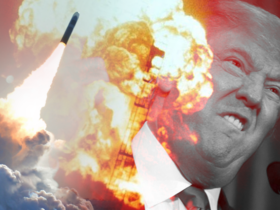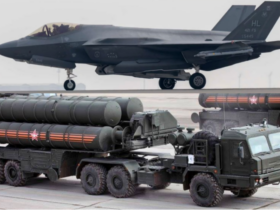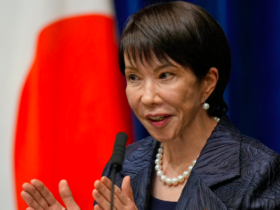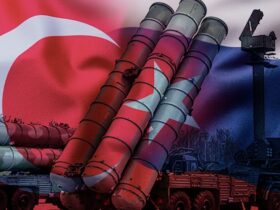A Rebalancing, not a Rebellion
A Rebalancing, not a Rebellion
By Mehmet Enes Beşer
As America doubles down on its dependence on tariffs and unilateral trade measures in the name of “economic security,” the world is now retaliating in kind—not by overt confrontation, but by subtle, incremental drifting apart. A process years in the making has now reached a new phase: de-Americanization of global trade. It is not a call to arms, but an economic act of self-defense—by friends and foes alike.
This phenomenon, all too frequently misunderstood as political or ideological anti-American backlash, has its origins in the dynamics of 21st-century globalization. The United States, previously the designer and anchor of the global free trade order, has increasingly become a source of instability within it. And as its policies also grow more protectionist and capricious, other economies—stretching from China and the EU to ASEAN and the Global South—are reshaping their vulnerability, diversifying their interdependence, and quietly recasting the architecture of world trade.
Weaponizing Trade: A Self-Inflicted Wound
The Trump administration’s return in 2025 has welcomed the re-acceleration of trade protectionist policies, replicating—and reinforcing—the tariff-first approach of the previous term. Plummeting sharply, new tariffs on steel, aluminum, semiconductors, and Chinese EVs are introduced, clothed under the banner of “fair trade” and “America First.”
But the economic cost is already being felt. With the most recent S&P Global figures, there were 129 company bankruptcies in the first two months of 2025 alone—the highest since 2010. Most of them were SMEs, who cannot absorb the cost of supply chain interruptions or the inflationary impact of tariffs on imported components.
The Peterson Institute report points to the protectionist paradox: tariffs can temporarily shield particular industries (such as steel) but only by sacrificing downstream industries. In 2018, America saved approximately 14,000 steelworkers—but lost over 75,000 manufacturing and construction jobs. These kinds of trade-offs are politically easy, but economically absurd.
Even Wall Street is sounding alarm bells. U.S. equities have lost over $7.7 trillion in market capitalization in the past month, as investor confidence erodes under mounting input prices, retaliatory trade warnings, and slowing consumption. Inflation, which had been slowly receding, is now creeping up again.
The Global Ripple Effect: Exit, Not Confrontation
What is new in 2025 is the international response. Unlike during the early 2000s, when most countries tried to “wait out” U.S. unilateral phases, the current tide of disengagement is structural, not cyclical.
China is advancing regionalization, deepening unity under RCEP and investment in Belt and Road infrastructure to reduce reliance on Western ports and markets. The EU, rhetorically still marching in lockstep with Washington on defense, is pursuing strategic autonomy in critical technologies, digital networks, and energy. Even traditionally U.S.-oriented Asian and Latin American allies are hedging increasingly, diversifying trade agreements and sourcing supply chains locally.
In practice, this means less dollar-denominated trade, more local currency settlement of trade, more bilateral trade agreements that exclude the U.S., and more alternative logistics corridors—like the China-Europe Railway or India-Middle East-Europe Economic Corridor (IMEEC).
This is not defiance. This is perseverance. Countries are not walking away from the U.S. in and of itself; they are walking away from the volatility which now seems to come with engaging too deeply within its trade system.
Multilateralism in Balance
The decline of U.S. credibility in trade is also eroding the very multilateral institutions that it has helped to build. The World Trade Organization’s appellate body remains quiescent, its jurisdiction systematically avoided. The Bretton Woods framework, already out of date, faces new obsolescence as rapidly growing economies build alternative institutions like the BRICS’ New Development Bank or the Asian Infrastructure Investment Bank (AIIB).
The irony is bitter: the nation that built the post-war world order to avoid the very chaos it now helps to cultivate is speeding its breakdown. Yet still, there is a way forward—if Washington will join the world once again on more just, more stable terms.
Opportunity Amid Transition
To the rest of the world, de-Americanization is not just a defensive response—it is an opportunity. Asia, Africa, and Latin America can build more balanced trade relations without risk concentration. Europe can capitalize on this move to rethink its industrial and digital policies, betting on preparedness rather than reactive regulation.
China, in particular, is at a crossroads. Its economic diplomacy must now shift from high-speed growth to high-trust engagement. This means addressing issues of transparency, leveling the playing field for foreign firms, and showing that its leadership in sectors like EVs, solar, and AI is not just by size—but by fairness.
Conclusion: A Multipolar Trade Order Emerges
The era of U.S.-centric globalization is not dying in flames, but in disintegration. As trade flows are redirected, new institutions emerge, and currencies diversify, the contours of a multipolar trade order are starting to emerge.
De-Americanization is not isolation—it is redistribution. It is not a rejection of America’s values, but a reaction to its instability. The question now is whether the U.S. can rediscover its role not as a trade enforcer, but as a partner in trade.
For the rest of the world, the goal isn’t to replace one hegemony with another—but to build an order where no single country has the ability to take trade as a hostage to political whim. That’s not a threat. It’s the only sustainable vision for international commerce.

















Leave a Reply